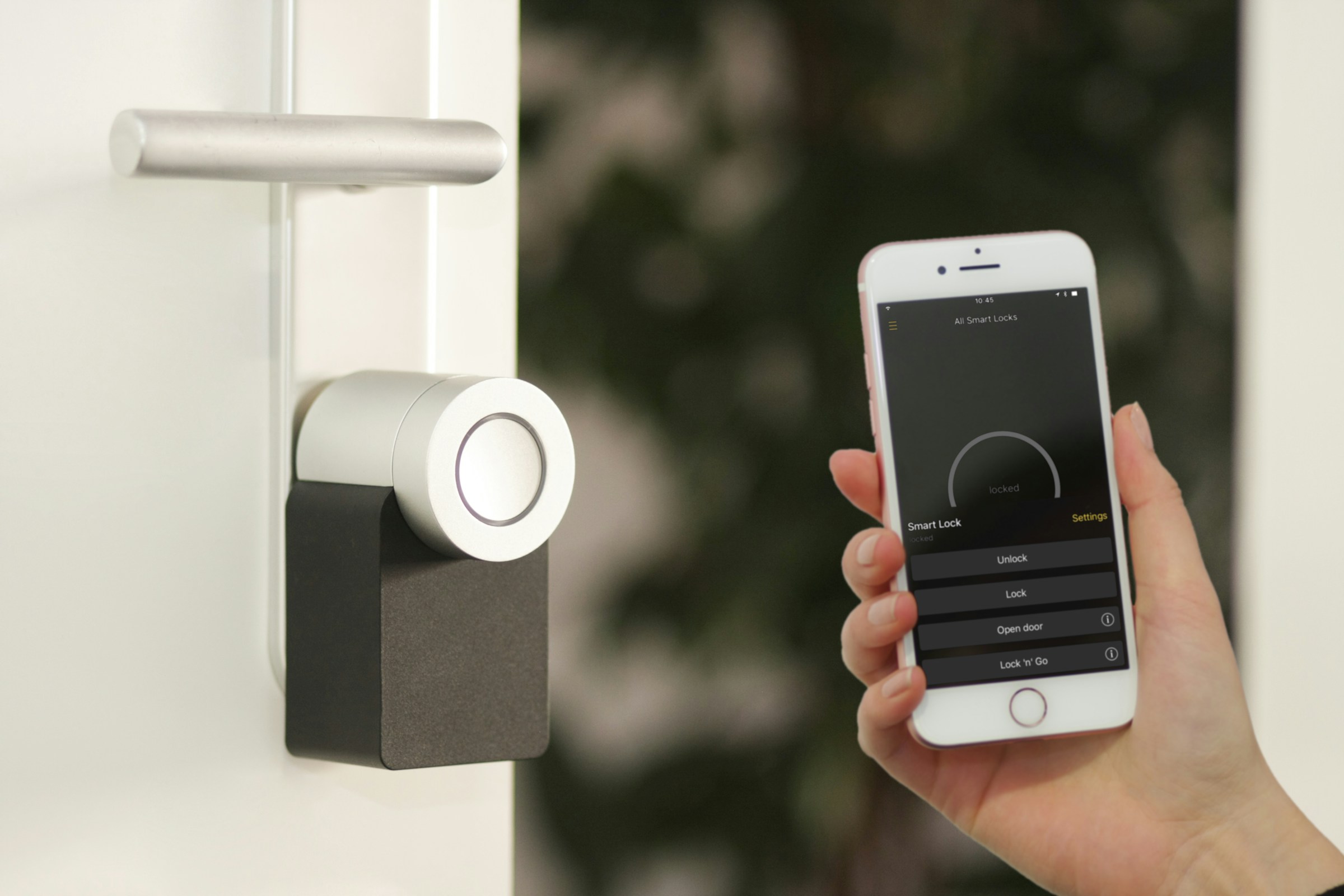In today’s fast-paced world, the way we light our homes has evolved dramatically. Smart home lighting is no longer a luxury; it has become an essential aspect of modern living. With the advent of advanced technology, controlling your home’s lighting through your smartphone has become effortless and intuitive. This article explores the best techniques for using your smartphone to optimize smart home lighting to suit various moods.
The Importance of Smart Home Lighting for Mood Enhancement
Smart home lighting significantly impacts our daily lives, affecting our mood, productivity, and overall well-being. Using your smartphone to control the lighting in your home can help create the perfect atmosphere for any occasion, whether you’re hosting a dinner party, relaxing with a book, or working from home. By understanding how light affects your mood, you can use your smart home lighting system to its full potential.
Also read : How to Use Your Smartphone to Create and Manage Custom Smart Home Routines?
Proper lighting can enhance the ambiance of your home, making it a more inviting and comfortable place. With the right techniques, you can easily switch between different lighting settings to match your mood or activity. For example, bright, cool lighting can help you stay focused and alert, while warm, dim lighting can create a cozy and relaxing environment.
Customizing Lighting Scenes for Different Moods
Customizing lighting scenes is one of the most effective ways to optimize your smart home lighting for various moods. Lighting scenes are pre-set configurations that adjust the brightness and color of your lights to create a specific atmosphere. By using your smartphone, you can easily create and save different lighting scenes for different activities and moods.
Also to discover : How Can You Use Your Smartphone to Monitor and Control Smart Thermostats in Multiple Rooms?
Creating lighting scenes involves adjusting the color temperature, brightness, and sometimes even the placement of your lights. For instance, a “Relax” scene might feature warm, dim lighting, while a “Focus” scene could include bright, cool lighting. Most smart home lighting systems allow you to save these scenes and switch between them with a single tap on your smartphone.
To get started, experiment with different lighting settings to find what works best for you. Consider the following scenarios:
- Relaxation: Use warm, dim lighting to create a cozy and calming atmosphere. Consider using amber or soft white light bulbs.
- Focus and Productivity: Opt for bright, cool lighting to help you stay alert and focused. Daylight or cool white bulbs are ideal for this purpose.
- Entertainment: For movie nights or parties, use colored lighting to create a fun and lively ambiance. Many smart lighting systems offer a wide range of colors to choose from.
- Wake-Up Routine: Gradually increase the brightness of your lights in the morning to simulate a natural sunrise. This can help you wake up more naturally and feel more energized.
By customizing lighting scenes, you can easily switch between different moods and activities, ensuring that your home always feels just right.
Integrating Voice Control with Smart Home Lighting
Voice control is another powerful tool for optimizing your smart home lighting for different moods. By integrating your smart lighting system with a voice assistant like Amazon Alexa, Google Assistant, or Apple Siri, you can control your lights using simple voice commands. This adds an extra layer of convenience, allowing you to adjust your lighting without even lifting a finger.
To integrate voice control with your smart home lighting, follow these steps:
- Choose a Voice Assistant: Decide which voice assistant you want to use. Most smart lighting systems are compatible with multiple voice assistants, so you can choose the one that best fits your needs.
- Set Up Your Voice Assistant: Follow the instructions provided by your voice assistant to set it up and connect it to your smart lighting system. This usually involves downloading an app and linking your smart lighting account.
- Create Voice Commands: Once your voice assistant is connected, you can create custom voice commands to control your lighting. For example, you might say “Alexa, set the living room lights to Relax” or “Hey Google, turn on the Focus scene in the office.”
- Experiment and Customize: Experiment with different voice commands to find what works best for you. Most voice assistants allow you to create custom commands and routines, so you can tailor your lighting control to your preferences.
Voice control adds a new level of convenience and flexibility to your smart home lighting system. Whether you’re cooking, working, or relaxing, you can easily adjust your lighting with a simple voice command.
Leveraging Smart Sensors for Adaptive Lighting
Smart sensors can take your smart home lighting to the next level by automatically adjusting your lights based on your activities and the environment. By using motion sensors, ambient light sensors, and even temperature sensors, you can create a truly adaptive lighting system that responds to your needs in real time.
One of the most common uses of smart sensors is motion-activated lighting. With motion sensors, your lights can turn on automatically when you enter a room and turn off when you leave. This not only adds convenience but also saves energy by ensuring that lights are only on when needed.
Ambient light sensors can adjust the brightness of your lights based on the natural light in the room. For example, if it’s a sunny day, your lights might dim to save energy. Conversely, if it’s cloudy or dark outside, your lights might brighten to ensure adequate illumination.
Temperature sensors can also be integrated with your smart home lighting system to create a more comfortable environment. For instance, if the temperature in a room rises above a certain threshold, your lights might automatically dim to reduce heat.
To leverage smart sensors for adaptive lighting, follow these steps:
- Choose Your Sensors: Decide which types of sensors you want to use. Most smart lighting systems offer a range of sensors, including motion, ambient light, and temperature sensors.
- Install and Configure Sensors: Follow the instructions provided by your smart lighting system to install and configure your sensors. This usually involves placing the sensors in strategic locations and linking them to your smart lighting system.
- Create Automation Rules: Use your smart lighting app to create automation rules based on your sensors. For example, you might create a rule that turns on the lights in your hallway when motion is detected or dims the lights in your living room when the ambient light level exceeds a certain threshold.
- Test and Adjust: Test your automation rules to ensure they work as intended. You may need to adjust the sensitivity of your sensors or fine-tune your automation rules to achieve the desired results.
By leveraging smart sensors, you can create a truly adaptive lighting system that responds to your needs and enhances your home environment.
Utilizing Smart Lighting Apps for Personalized Control
Smart lighting apps are a powerful tool for optimizing your home lighting to suit different moods. These apps provide a user-friendly interface that allows you to control and customize your lighting with ease. Whether you want to adjust the brightness, change the color, or create a new lighting scene, smart lighting apps put full control at your fingertips.
Most smart lighting systems come with their own dedicated apps, which are typically available for both iOS and Android devices. These apps offer a range of features, allowing you to:
- Adjust Brightness and Color: Use sliders or color wheels to adjust the brightness and color of your lights. Some apps even allow you to pick colors from a photo or use a color-matching tool to find the perfect hue.
- Create and Save Lighting Scenes: As mentioned earlier, lighting scenes are pre-set configurations that adjust your lights to create a specific atmosphere. With smart lighting apps, you can easily create, save, and switch between different scenes.
- Set Schedules and Timers: Many smart lighting apps allow you to set schedules and timers for your lights. For example, you might schedule your bedroom lights to gradually brighten in the morning to help you wake up or set a timer to turn off your living room lights after a certain period of inactivity.
- Group and Control Multiple Lights: If you have multiple smart lights in your home, smart lighting apps allow you to group and control them simultaneously. This makes it easy to create a cohesive lighting scheme throughout your home.
To get the most out of your smart lighting app, follow these tips:
- Explore the App’s Features: Take the time to explore all the features and settings available in your smart lighting app. Familiarizing yourself with the app will help you make the most of its capabilities.
- Experiment with Different Settings: Don’t be afraid to experiment with different brightness levels, colors, and scenes to find what works best for you. The beauty of smart lighting is that it’s highly customizable, so you can tailor it to your preferences.
- Use Voice Commands in Conjunction: If your smart lighting system is compatible with voice assistants, consider using voice commands in conjunction with the app for added convenience and flexibility.
- Regularly Update the App: Ensure that your smart lighting app is always up to date. Manufacturers frequently release updates that add new features and improve performance, so keeping your app current ensures you have access to the latest enhancements.
By utilizing smart lighting apps, you can enjoy personalized control over your home lighting, making it easy to create the perfect ambiance for any mood or activity.
In conclusion, using your smartphone to optimize smart home lighting for different moods is a game-changer in modern living. By understanding the impact of lighting on mood and leveraging the powerful tools available, you can create a comfortable, inviting, and versatile home environment. Techniques such as customizing lighting scenes, integrating voice control, leveraging smart sensors, and utilizing smart lighting apps empower you to effortlessly manage your lighting to suit any occasion.
With the right approach, your smart home lighting system can enhance your daily life, improve your well-being, and transform your home into a dynamic and adaptive space. So, embrace the power of smart home lighting and discover how it can elevate your home experience like never before.






